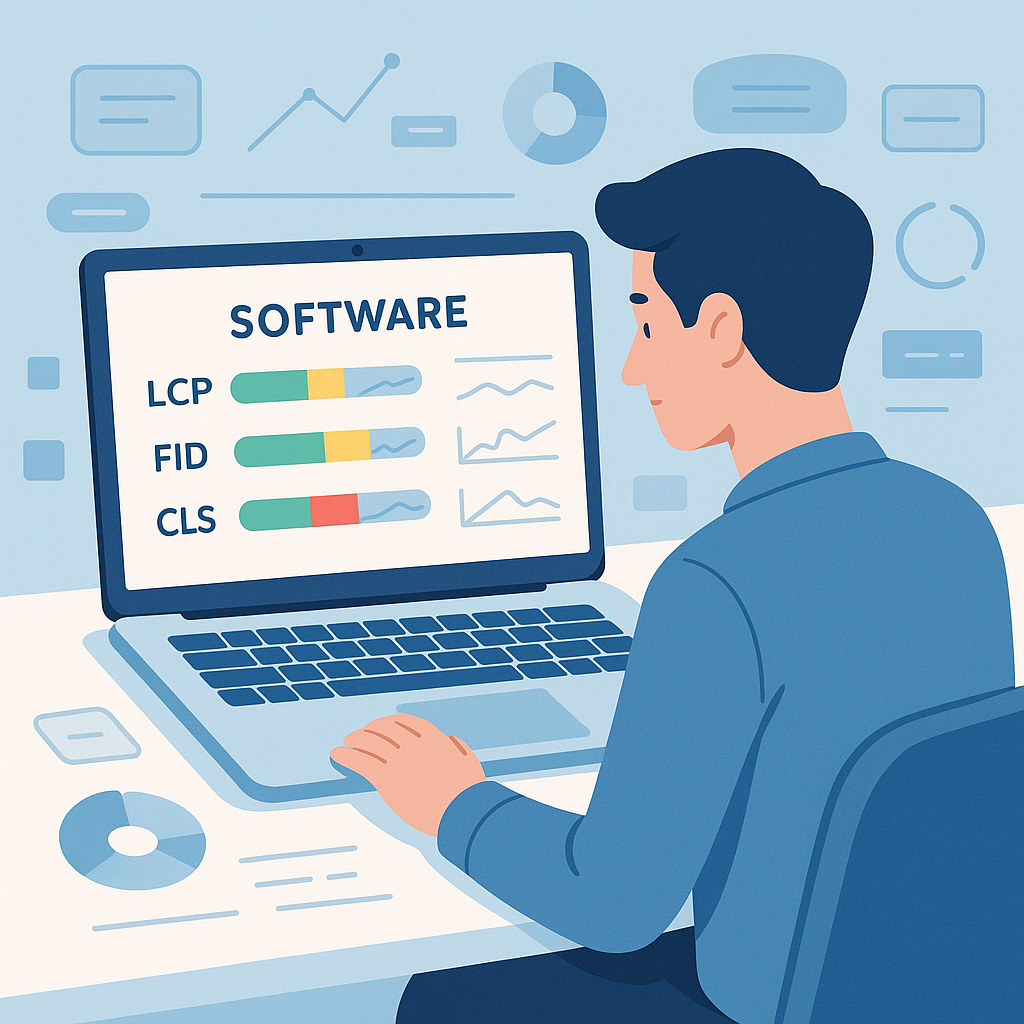If you’re the owner of a software product website, blog, or documentation page, you might be asking yourself: How can I boost my Google Search rankings? A key answer is: Make your website more user-friendly and efficient.
Let’s explain this in plain language.
🧠 What Are User Experience (UX) Signals?
User Experience (UX) refers to how people react when they visit your website.
Google monitors certain indicators to determine if your site provides a positive experience.
Here are some examples:
- Bounce Rate: Do visitors exit without clicking anything?
- Time on Site: Do they spend time reading your content?
- Click-Through Rate (CTR): Are people clicking your site in search results?
- Repeat Visits: Do they return?
If people spend more time and interact with your site, Google considers it useful — and gives it a higher ranking.
🚦 What Are Core Web Vitals?
Core Web Vitals are three key performance metrics that show Google how fast and stable your site is.
Here’s what they mean:
1. LCP (Largest Contentful Paint)
How your main stuff (like words or pictures) shows up. ✅ It’s best if it pops up in under 2.5 seconds
2. FID (First Input Delay)
How fast your website reacts when someone clicks or taps. ✅ It should take less than 100 milliseconds
3. CLS (Cumulative Layout Shift)
How steady your layout stays — do things jump around while loading? ✅ Keep this below 0.1 for a smooth visit
These now play a part in Google’s ranking system — a quicker smoother site = better SEO.
💻 Why This Matters for Software Websites
Software websites have:
- Code samples
- Interactive UI demos
- Dashboards
- Long technical content
When your site is slow, jumpy, or unresponsive, visitors will leave — and search engines will take notice.
A smooth UX and quick loading help you:
- Climb higher in Google rankings
- Hold users’ attention
- Boost sign-ups, downloads, or sales
🔧 Ways to Enhance Your UX & Core Web Vitals
Here are straightforward steps you can take:
🏎️ To Speed Up Loading (Improve LCP):
- Pick smaller image sizes
- Squeeze files like CSS and JavaScript
- Load essential elements on the first screen
⏱️ To Boost Speed (Enhance FID):
- Limit the number of external tools
- Apply
asyncordeferto JavaScript - Keep background tasks (scripts) minimal
📐 To Maintain Steady Layout (Improve CLS):
- Set specific width and height for images and videos
- Avoid adding elements at the page top after loading
- Steer clear of flashy layout changes or moving buttons
🔍 Tools at Your Disposal (No Cost)
- PageSpeed Insights: https://pagespeed.web.dev/ → This tool provides a score and suggestions to address problems.
- Google Search Console → Core Web Vitals → This feature shows actual user data from Chrome.
- Lighthouse (DevTools) → This tool generates a thorough performance analysis in your browser.
✨ Final Words
In 2025 and beyond, SEO has an impact on more than just keywords — it focuses on providing users with a seamless, quick, and useful experience.
Your software website will climb Google rankings if it loads fast, functions well across all devices, and keeps users satisfied.
